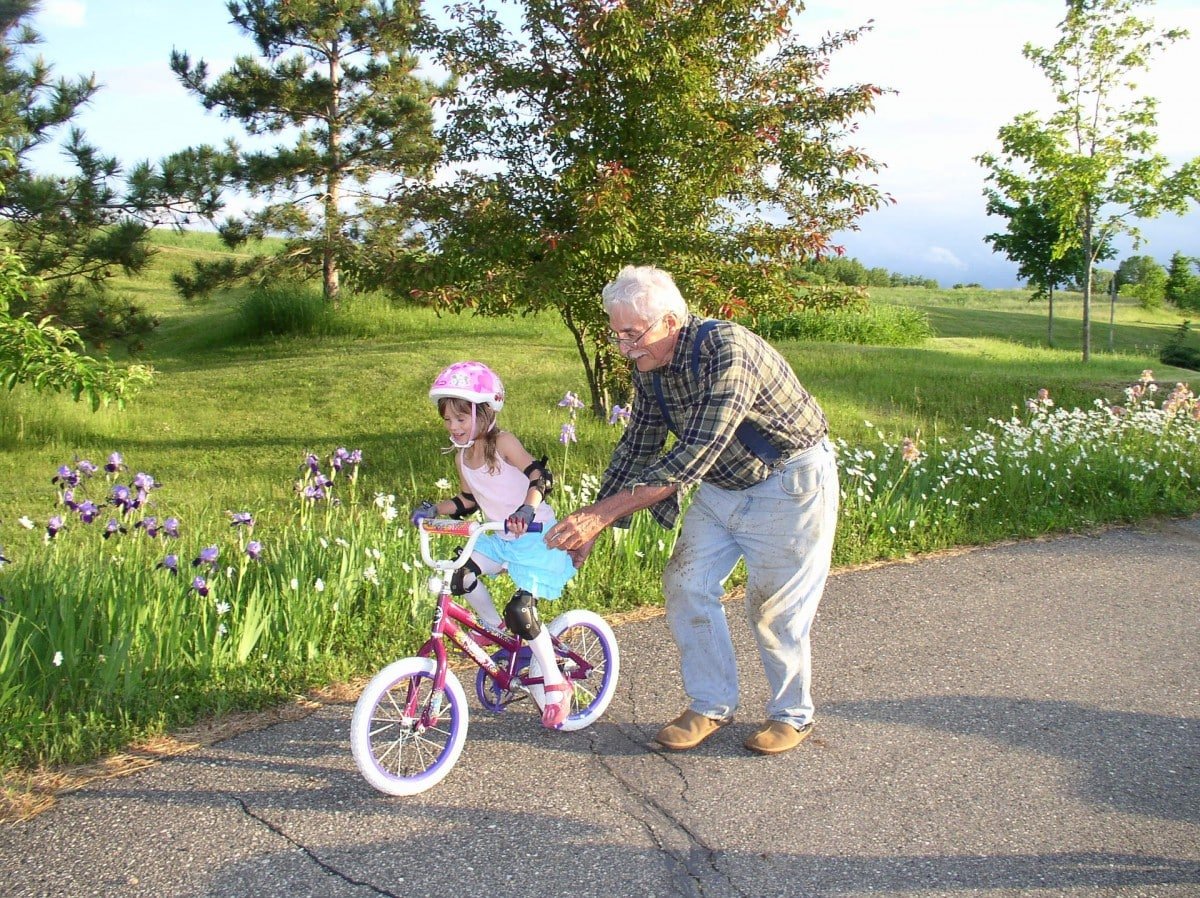
When grandparents engage with their grandchildren, their interaction is essentially characterized by haptics. An element that is completely absent from long-distance digital contact. Verena Fuchsberger is developing digital forms of haptics to enable a more emotional experience..
Globalization and europeanization have made people more mobile. Moments of shared experiences between grandparents and grandchildren are no longer taken for granted. Family members often live far away from each other. Online communication services such as Skype, Whatsapp or Facetime are not really suitable for small children. Even existing digital audio and video communication technologies do not address the needs of these specific target groups. What is missing are physical elements, Fuchsberger states. As part of the on-going Re:Tangent project, she is researching new practices and elements in the virtual world which come closer to the real world.
Regaining haptics
Fuchsberger is aware from previous studies that many physical aspects are involved when grandparents deal with their grandchildren. They go into the forest and collect leaves or the child paints a picture that is then stuck on the refrigerator door … Later the grandparents associate the drawing with various values and memories.
Her interest in research goes hand in hand with current developments in computer science, which aims to regain haptics following the dematerialization stage.
“A physical medium such as a book has a certain haptic quality, but this is lost in virtual communication. The loss of these kinds of qualities was the starting point for the project,” Fuchsberger explains.
Exploring possibilities
The researcher wants to explore how the experience of a digital interaction in long-distance contact could be enhanced with tactile elements and thereby positively influence the experience of those communicating. The term ‘experience’ refers to any form of emotion.
- From a social science perspective: to clarify whether it is even possible, with the help of physical elements, to support the building up of relationships between grandparents and grandchildren in digital long-distance contact.
- From the perspective of computer science: the aim is to explore the possibilities of physical interaction in digital long-distance contact.
Physicality potential
The researcher sees the potential for physicality, particularly in games which are deeply rooted in social practices. The original idea was to enhance a board game with haptic elements. However, she and her interdisciplinary team do not yet have a concrete game in mind. The study design is exploratory and there are still new aspects to be discovered. Prospective users play a central role. In a large introductory study, the initial aim was to determine the needs of grandparents and grandchildren with regard to interaction practices.
“We have a strong focus on materials, yet the benefits are extremely relevant. Users are being involved. Talking about it is not enough. They have to experience it in order to know what it feels like”. Verena Fuchsberger
The project was started in 2018 and will continue until 2021. At the moment the researchers are still at the material exploration stage. The results of the initial study will be used for the development of prototypes. These will be tested in a second study with grandparents and children in order to determine suitable digital practices and physical elements.
Potential playful elements
It is less about a specific game than about a matter of which playful practices and elements should be incorporated. An example of a feasible element would be an hourglass and how this would behave in two different locations. If a grandparent turns the hourglass upside down, the child’s hourglass is also turned upside down. Possible technical tools for creating physical effects over a distance might be wearables. For example, if a grandparent pulls up a sleeve, the child does the same. However, there are still many unanswered questions. For instance: How do you deal with time differences?
In terms of technical means, the aim is to adapt the effect of existing instruments rather than invent new ones. For example, one challenge is to create the illusion of haptic elements. E.g. making the game sound audible across a distance, recreating the sound of a dice rolling without the need for dice.
About the team
Fuchsberger is a postdoc scholar at the Center for Human-Computer Interaction at the University of Salzburg. Her research focuses on the effects of human and non-human actors in human/computer and interactive design. Her special focus is on the materiality of interactions. Her work builds on her past studies in psychology and educational sciences and her doctorate in human-computer interaction.
She is currently working on the Re:tangent project in an interdisciplinary team with a sociologist, two interactive designers and a game developer. Two researchers from the Meaningful Interactions Lab (Mintlab) at the Institute for Media Studies at KU Leuven (Belgium) are contributing their expertise on children’s media use.
Shortly after the start of the project, Fuchsberger’s efforts were rewarded: She won the 2018 Hedi Lamarr Preis 2018, which is worth 10,000 euros and is awarded annually by the city of Vienna to a researcher in the field of IT.
Also of interest:
Better integration of autistic children thanks to assistive technology
‘Feeling trousers’ for measuring social behaviours
